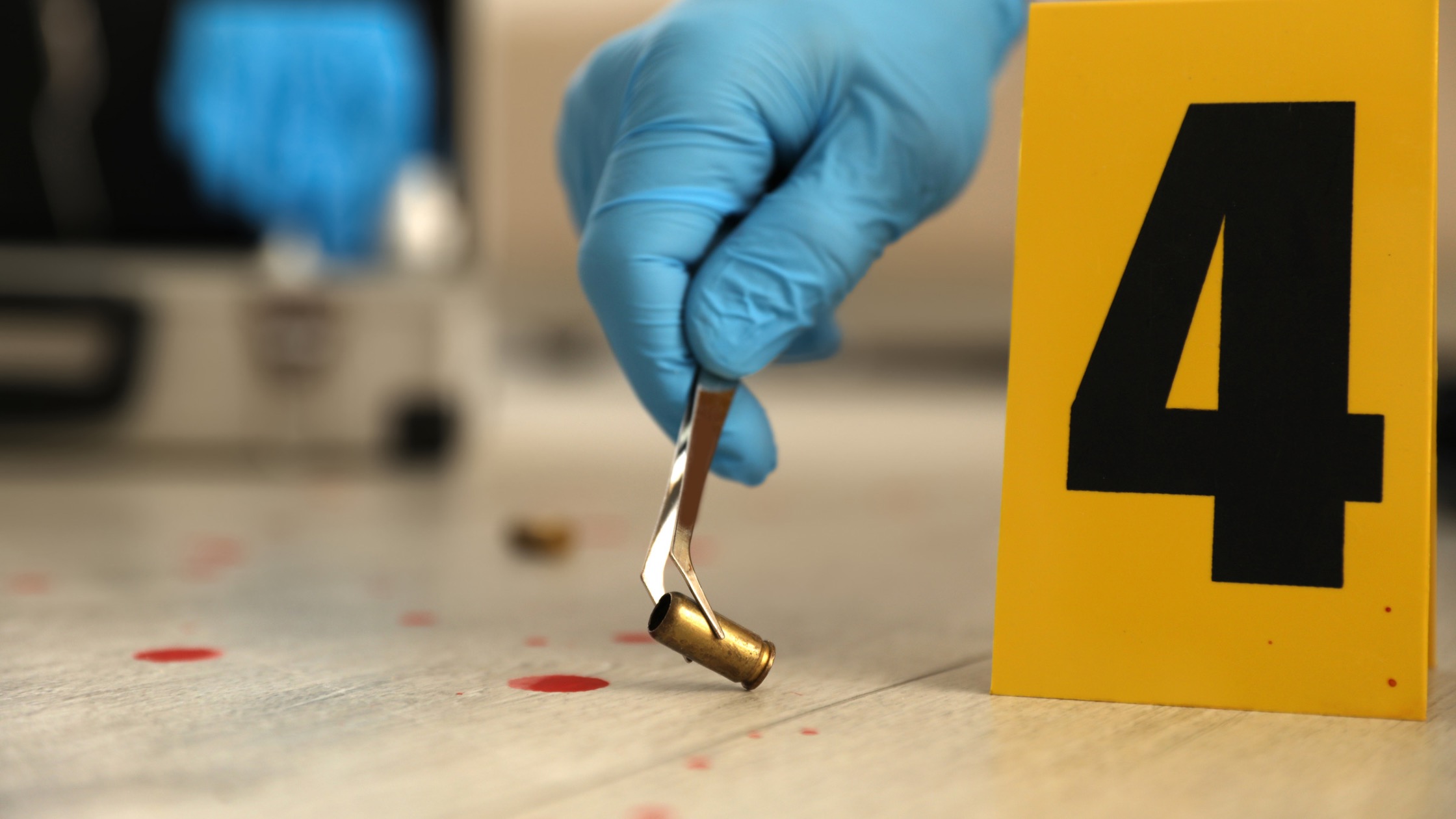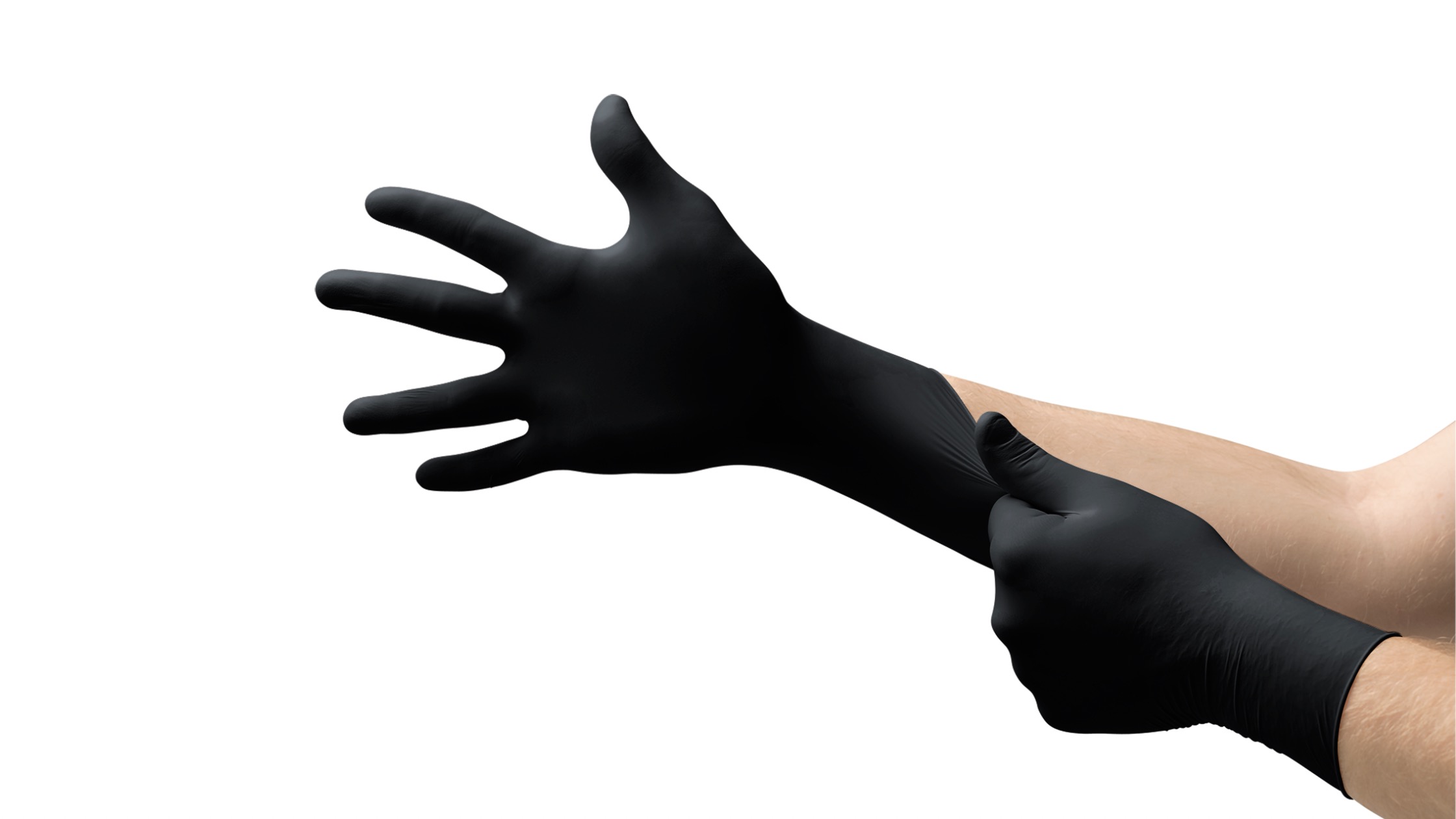Introduction
The line of duty for law enforcement officers is fraught with hazards. They are often exposed to situations that pose a direct threat to their health and safety. Among the essential gear they require, personal protective equipment stands out. A critical component of this equipment is disposable gloves for law enforcement.
These gloves safeguard the hands of officers from various risks that come with their roles. They offer a shield against potential harm while allowing officers to perform their duties effectively.
Officers encounter situations that could expose them to bloodborne pathogens such as HIV and Hepatitis B when dealing with bodily fluids at crime scenes or during first aid procedures. Besides, they face the risk of punctured wounds when handling sharp objects or during suspect searches. Choosing the right disposable gloves becomes paramount in these circumstances.
Selecting suitable gloves offers not just protection but also ensures comfort during wear. This dual function makes disposable gloves an indispensable part of protective gear for law enforcement officers.
The following sections delve deeper into the types of disposable gloves available, key considerations when selecting them, and tips on ensuring a secure and comfortable fit.
Types of Disposable Gloves for Law Enforcement
When it comes to personal safety while on duty, no detail is too small to consider. As they face various challenges and hazards, law enforcement officers need reliable and robust protective gear, down to the disposable gloves they wear. Two types of gloves stand out in this regard: nitrile gloves and latex-free gloves.
1. Nitrile Gloves
Nitrile gloves offer a superior level of protection against bloodborne pathogens such as HIV and Hepatitis B. Law enforcement officers frequently encounter these dangerous pathogens when dealing with bodily fluids at crime scenes. Therefore, using gloves that provide reliable protection is paramount.
A notable brand in this category is the Microflex Midknight Touch 93-732 Nitrile Gloves. These gloves are a popular choice among law enforcement professionals due to several standout features:
- Superior puncture resistance: The Microflex Midknight Touch 93-732 offers a higher level of puncture resistance compared to other glove materials like vinyl or latex. This feature is vital for police work, where the risk of accidental punctures from sharp objects at crime scenes is high.
- Tested barrier effectiveness against Fentanyl: Fentanyl, a potent synthetic opioid, poses a significant threat during drug seizures and investigations. Exposure can lead to severe health implications, making it crucial for law enforcement officers to wear gloves tested for fentanyl resistance.
You can find more information about other reliable nitrile glove options like the Microflex Midknight Touch 93-732 on Discounted Gloves' website.
2. Latex-Free Gloves
Choosing latex-free gloves helps avoid potential allergic reactions among officers with known latex sensitivities or asthma. An officer's health should never be compromised - even by the very equipment meant to protect them.
The Microflex 92-134 Versatility Latex Free Exam Gloves are an excellent example of high-quality latex-free gloves. They offer the following benefits:
- Allergen safety: These gloves are made from materials that do not contain the proteins present in natural rubber latex, which can cause allergic reactions.
- Tactile sensitivity: Despite being latex-free, the Microflex Latex Free Gloves do not sacrifice tactile sensitivity. This feature is critical when handling evidence or performing delicate tasks.
Choosing the right type of disposable gloves significantly contributes to an officer's safety and efficiency while on duty. The right gloves provide protection against dangerous pathogens, prevent allergic reactions, and allow for precise handling of objects. Whether it's nitrile or latex-free gloves, what matters most is that the chosen gloves meet the specific needs and requirements of each officer's duties.
2. Latex-Free Gloves
When it comes to personal protective equipment, the choice of material matters significantly. Latex-free gloves have become a go-to option for officers who have latex sensitivities or asthma. Such conditions can trigger allergic reactions, making it crucial to select gloves that eliminate this risk.
The advantages of using latex-free gloves go beyond allergen safety. These gloves also offer ample protection against bloodborne pathogens and fentanyl, much like their nitrile counterparts. However, they stand out with their superior tactile sensitivity - a feature that is pivotal during intricate tasks at crime scenes.
Why Choose Nitrile Gloves?
One of the prevalent materials used in latex-free gloves is nitrile. Nitrile gloves are known for their high level of protection against hazards such as HIV and Hepatitis B that law enforcement officers may encounter when dealing with bodily fluids at crime scenes.
Here's why nitrile gloves are an excellent choice:
- Resilient and durable: Nitrile gloves resist punctures better than any other material, including latex. This makes them suitable for situations where sharp objects or rough surfaces may be encountered.
- Fentanyl resistance: These gloves provide a secure barrier against fentanyl - a potent synthetic opioid often found in illicit drugs.
Microflex Latex-Free Exam Gloves: A Reliable Option
An exceptional example of latex-free gloves suitable for law enforcement use is the Microflex 92-134 Versatility Latex Free Exam Gloves. Here are some reasons why these gloves come highly recommended:
- Allergen Safety: Made from nitrile, these gloves pose no risk to those with latex allergies or sensitivities.
- Tactile Sensitivity: Microflex Gloves ensure you won't lose your touch sensitivity, enabling you to perform delicate tasks effectively.
- Bloodborne Pathogen Protection: These gloves provide reliable protection from bloodborne pathogens.
- Fentanyl Resistance: Tested for resistance against Fentanyl, Microflex Gloves ensure high-level protection during drug-related investigations.
In essence, latex-free disposable gloves like the Microflex 92-134 Versatility Latex Free Exam Gloves provide an excellent balance between safety and comfort. They offer superior protection from bloodborne pathogens, outstanding durability, and allergen safety, all while ensuring tactile sensitivity for delicate tasks.
While selecting gloves, remember that each situation may require a different type of glove. Always consider the task at hand, possible risks involved, and personal comfort levels. The right gloves are those that not only protect you but also allow you to perform your duties effectively and comfortably.
Key Considerations in Selecting Disposable Gloves for Law Enforcement

Selecting the right disposable gloves for police officers is not just about finding any barrier against potential hazards; it's about identifying gloves that offer tailored protection and functional features. As frontline responders at crime scenes, law enforcement personnel require gloves that do more than just protect against bloodborne pathogens. Enhanced features like extended cuffs and textured fingertips play a crucial role in ensuring officers can perform their duties effectively while maintaining safety.
3. Bloodborne Pathogen Protection and Beyond
When considering protective equipment for law enforcement, particularly for crime scene investigations, the risk of coming into contact with bloodborne pathogens is a significant concern. Disposable gloves designed to prevent the transmission of pathogens such as HIV, Hepatitis B, and Hepatitis C are essential. However, the protection needs to extend beyond just the palm area of the disposable gloves.
Extended Cuffs: Disposable gloves with extended cuffs provide additional coverage up the wrist and lower forearm, creating an extended barrier against infectious agents. This design is particularly beneficial when officers need to reach into areas where they may brush against surfaces or substances that are potentially contaminated.
Textured Fingertips: Officers often handle evidence and tools that require precision. Textured fingertips enhance grip strength under various conditions—wet or dry—and ensure that items can be manipulated safely without slipping. This feature is especially valuable during prolonged evidence handling processes where maintaining a secure hold on objects is imperative.
Consider Microflex Midknight Touch 93-732 gloves as an example; they offer both these enhanced features, making them an ideal choice for law enforcement use. Extended cuffs provide additional protection during invasive procedures or when there is a risk of splashes with harmful substances. Textured fingertips allow for better control during delicate tasks such as fingerprinting or handling small pieces of evidence.
4. Specialized Glove Variants for Unique Situations
Law enforcement duties are diverse, and so are the situations that officers find themselves in. Therefore, having access to specialized glove variants is essential for comprehensive protection.
Chemical Resistant Gloves: Officers may encounter hazardous substances like illicit drugs or unknown chemicals during raids or drug seizures. Chemical resistant gloves are crafted to withstand such threats without degrading or compromising the integrity of the glove. For instance, Microflex Safegrip SG-375 are specifically formulated to resist a wide range of chemicals and are suitable for situations where chemical exposure is a possibility.
Puncture Resistant Gloves: The risk of needlestick injuries cannot be understated in law enforcement. Searching suspects or patting them down may expose officers to used needles and other sharp objects capable of puncturing standard gloves. Puncture resistant gloves are reinforced to withstand such scenarios without tearing or allowing penetration. Take the Microflex Diamond Grip MF-300 series as an example; these gloves blend dexterity with high-level puncture resistance, providing peace of mind during high-risk searches.
In summary, when it comes to protective equipment such as disposable gloves for police use, one must consider:
- The need for bloodborne pathogens protection
- Enhanced features like extended cuffs for additional safety
- Textured fingertips for improved handling capabilities
- Chemical resistant variants for encounters with hazardous substances
- Puncture resistant options catering to risks from needles and sharps
By integrating these considerations into their selection process, law enforcement agencies ensure their officers have the right protective gear tailored to the varied demands of their job roles—maintaining both safety and performance standards at all times.
Key Considerations for Choosing Disposable Gloves
When deciding on the most suitable disposable gloves for distinct tasks, law enforcement officers should take into account the following factors:
- Risk Assessment: Evaluate the type and level of potential risks associated with different duties. This includes considering the likelihood of exposure to hazardous substances or the possibility of encountering sharp objects.
- Balancing Protection and Practicality: Strike a balance between immediate protection offered by the gloves and their long-term comfort and durability. It is important to find gloves that provide adequate safeguarding without hindering officers' ability to perform their tasks effectively.
- Research and Selection: Understand that various brands and models may offer varying levels of protection. Therefore, conducting thorough research and choosing gloves that have been tested and certified specifically for use in law enforcement settings is essential.
By equipping themselves with specialized gloves that cater to their unique requirements, law enforcement officers can ensure their well-being while maintaining optimal performance levels. Ultimately, this contributes to more efficient handling of crime scenes and the creation of safer communities."
Ensuring a Secure and Comfortable Fit

5. Sizing Guide for Disposable Gloves
Selecting the correct size of disposable gloves is critical for law enforcement officers. A proper fit ensures maximum comfort, dexterity, and protection during various tasks such as evidence collection, pat-downs, and handling potentially hazardous materials. To assist in this process, consider the following practical guidelines accompanied by a glove size chart tailored to law enforcement needs.
Measure Your Hand
Start by measuring the width of your hand. Lay your dominant hand flat, palm up, and measure the width across your palm just below your knuckles (do not include the thumb). Use this measurement to compare with the glove size chart provided by manufacturers.
Glove Size Chart
Use this chart to find your glove size based on your hand measurement:
- Extra Small (XS): less than 3 inches (76 mm)
- Small (S): 3 to 3.5 inches (76 to 89 mm)
- Medium (M): 3.5 to 4 inches (89 to 102 mm)
- Large (L): 4 to 4.5 inches (102 to 114 mm)
- Extra Large (XL): 4.5 to 5 inches (114 to 127 mm)
- Double Extra Large (XXL): greater than 5 inches (127 mm)
Please note that glove sizes may vary slightly between different brands or models. Always check the specific brand's sizing chart before making a purchase.
Check for Full Range of Motion
Once you have a pair of gloves corresponding to your measurements, try them on. Ensure you can make a full fist and extend your fingers completely without too much tightness or excess material at your fingertips.
Assess Cuff Length
The cuff should extend comfortably over the wrist. For tasks requiring extra protection against spills or splashes, look for gloves with extended cuffs.
Tips for Ensuring a Secure Fit
A secure fit is not solely about choosing the right size; it also involves proper donning techniques and additional measures that enhance glove performance.
Donning Gloves Properly
- Ensure your hands are dry before putting on gloves.
- If you're wearing rings or other jewelry on your fingers, consider removing them as they can tear the glove or impede a snug fit.
Double-Gloving
For situations necessitating additional barrier protection or when dealing with high-risk materials, double-gloving is advised. Wear two layers of gloves – if one gets compromised, the other serves as a protective barrier.
Cuff Sealing Techniques
When wearing long sleeves:
- Tuck the first layer of glove cuffs under your sleeve to prevent roll-down and exposure of skin.
- If wearing double gloves, tuck only the inner glove cuff under the sleeve while keeping the second layer's cuff over it for easy removal and added protection against contaminants.
Ensuring that disposable gloves fit correctly is essential for law enforcement officers who rely on their hands for various sensitive tasks. By following these guidelines and using a reliable glove size chart, officers can achieve a balance between safety and functionality required in their demanding roles.
Remember that personal preference plays a significant role; what works best for one officer may differ for another based on individual needs and comfort levels. Law enforcement agencies should offer a range of sizes and styles to accommodate all officers adequately.
6. Tips for Ensuring a Secure Fit
Achieving the right fit for disposable gloves is not only essential for law enforcement officers' protection but also plays a crucial role in their ability to carry out tasks with the necessary precision and ease. A proper fit ensures that gloves act like a second skin, providing the comfort and dexterity needed to manipulate tools, handle firearms, and process evidence without interference.
Key Techniques to Ensure a Secure Fit:
1. Check the Glove Size Chart
Always refer to the glove size chart before making a selection. The chart is designed to guide you toward choosing gloves that conform closely to your hands, ensuring maximum dexterity.
2. Double-Gloving
This method involves wearing two layers of gloves, which serves multiple purposes:
- Adds an extra layer of protection against punctures or tears.
- Enhances the glove's fit by reducing slippage.
- Allows for quick glove change in case the outer layer is compromised.
When double-gloving, ensure that the base layer is snug enough to maintain tactile sensitivity.
3. Proper Cuff Sealing
Gloves with extended cuffs provide additional coverage and protection. To maintain a secure fit:
- Tuck the cuff under sleeves where possible to prevent roll-down and exposure.
- If wearing additional protective gear like arm guards, ensure that glove cuffs overlap adequately.
4. Wearing Disposable Gloves Correctly
- Inspect gloves for any damage or defects before use.
- Put on gloves over clean, dry hands to avoid tearing.
- Adjust at the wrist to minimize bunching and enhance grip stability.
Considerations for Maintaining Glove Integrity:
Avoid sharp objects: Be mindful of equipment or environmental factors that could compromise glove integrity.
Limit contact with chemical substances: Some chemicals can degrade glove material; know your glove's chemical resistance properties.
Monitor wear time: Prolonged use can stretch and weaken gloves; replace as needed to ensure consistent performance.
By adhering to these guidelines, you can trust that your disposable gloves will provide a high level of protection while allowing you to perform your duties as a law enforcement officer proficiently. Remember, proper fit and sizing are as critical as the material and design of the gloves when it comes to your safety and job performance.
Conclusion

Choosing the right disposable gloves is a critical decision that directly impacts the safety and comfort of law enforcement officers in the field. Remember, these protective gear are not just gloves. They form a barrier against bloodborne pathogens, chemical hazards, and puncture injuries that police officers might encounter during their duties.
While all disposable gloves provide basic protection, certain features such as extended cuffs, textured fingertips, and puncture resistance can enhance performance significantly. Various options like Nitrile Gloves and Latex-Free Gloves offer specific advantages and should be considered based on situational needs.
The best disposable gloves for law enforcement adhere to the highest quality standards. They provide not just protection but also comfort, ensuring a secure fit without compromising flexibility.
Law enforcement agencies should prioritize the provision of these high-quality disposable gloves. But providing the right gear is half the battle won. Equally important is to train officers on proper glove use, fitting techniques like double-gloving and cuff sealing, and safe disposal protocols.
Remember, a glove is only as effective as its user allows it to be. So, make the right choice and ensure your gear works for you, not against you.


